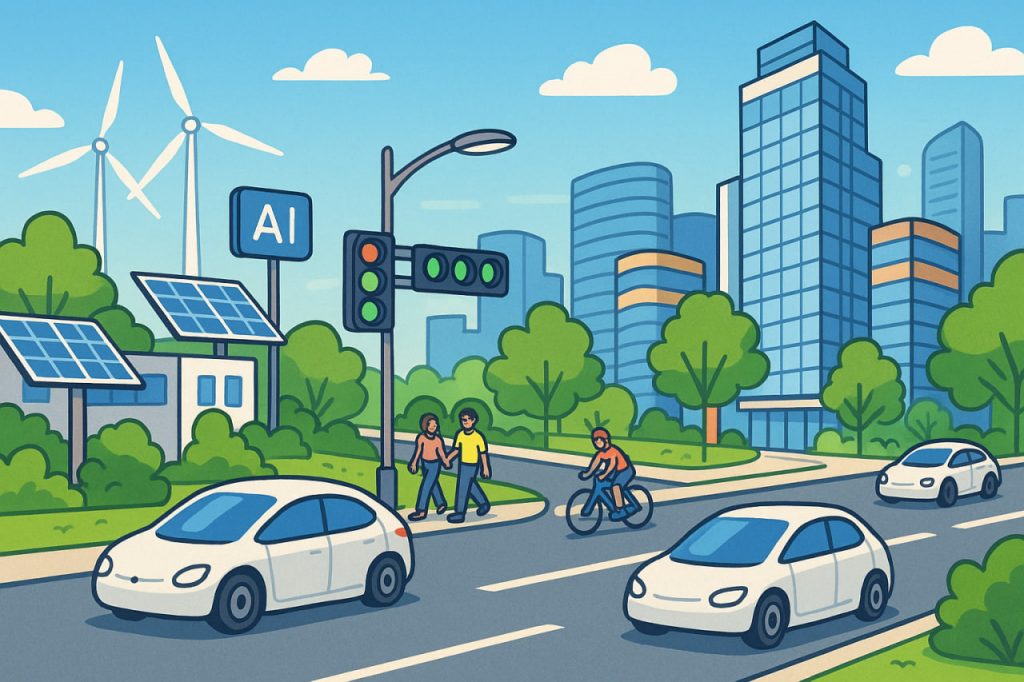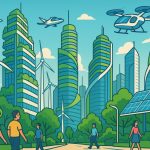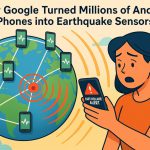A smart city represents the next evolution of urban life—an interconnected environment where digital technology, artificial intelligence, and sustainability merge to enhance the quality of living. Unlike traditional cities, smart cities use sensors, networks, and data analytics to optimize energy use, traffic flow, waste management, and public safety. The goal is not only efficiency but also harmony between humans, machines, and nature. In the decades ahead, smart cities will redefine how we live, turning ordinary streets into intelligent, adaptive ecosystems that respond to citizens in real time.
The Core Concept of a Smart City
At its heart, a smart city operates like a living organism, with digital “nervous systems” collecting and processing information across every district. Sensors monitor air quality, traffic density, noise levels, and energy consumption. This data is transmitted to central control centers that analyze conditions and automatically adjust systems. For example, streetlights dim when no pedestrians are present, traffic lights adapt to vehicle movement, and water systems detect leaks instantly. These innovations make urban life safer, cleaner, and more efficient while reducing waste and costs.
Transportation and Mobility
Smart transportation is one of the most visible aspects of a smart city. Autonomous vehicles, drones, and connected bicycles form part of an integrated mobility network that eliminates congestion and accidents. Public transport operates dynamically, adjusting routes according to real-time demand. Electric charging stations are embedded throughout the city, powered by renewable sources like solar and wind. AI-driven traffic systems ensure seamless movement, while pedestrian zones and e-mobility hubs promote sustainable travel. The result is a city where commuting becomes faster, greener, and stress-free.
Sustainable Energy and Environmental Control
Energy efficiency lies at the foundation of every smart city. Buildings are equipped with smart grids that store and share electricity locally. Solar rooftops, wind microturbines, and geothermal systems generate clean energy for neighborhoods. Waste is transformed into power through bioreactors, while advanced recycling systems operate autonomously. Smart water management prevents drought and flooding by controlling flow rates and monitoring consumption. Green roofs and vertical gardens absorb carbon dioxide, transforming cities into breathable environments that combat climate change.
Digital Governance and Citizen Participation
In the smart city, governance becomes participatory and transparent. Citizens can access all public services—such as healthcare, utilities, and documentation—through integrated digital platforms. Feedback systems allow residents to report problems directly to city authorities, who respond through automated workflows. AI-based analytics help governments predict needs, allocate resources efficiently, and detect issues before they escalate. Blockchain technology ensures that administrative processes remain secure and corruption-free. The true power of a smart city lies in its ability to make every resident an active participant in urban evolution.
Security and Privacy in the Digital Age
As technology becomes embedded in everyday life, cybersecurity and data privacy become vital. Smart cities will employ quantum encryption and decentralized data systems to protect personal information. Surveillance will evolve into predictive safety, where algorithms identify potential hazards—such as fire risks or infrastructure damage—before they occur. Ethical frameworks will ensure that surveillance remains transparent and accountable. Striking the right balance between safety and freedom will define the success of digital governance in future metropolises.
Future Vision: The City That Thinks
Imagine walking through a city that senses your presence, adjusts the temperature for comfort, and guides you to your destination using augmented reality. Buildings communicate with each other to balance energy loads, while drones deliver medicine and food. Autonomous cleaning robots keep streets spotless, and holographic interfaces connect citizens to global networks. This is not science fiction—it is the logical outcome of technological convergence and human ingenuity. A true smart city will be defined not by machines, but by how intelligently humanity integrates technology into life.
Interesting Facts
- The world’s first large-scale smart city project, Songdo in South Korea, is built entirely around digital infrastructure.
- By 2035, over half of global megacities are expected to implement full-scale smart systems.
- Smart streetlights can reduce urban energy use by up to 70% through adaptive brightness.
- Barcelona’s smart water system saves more than 25% of its annual water consumption.
- AI-based city management can lower CO₂ emissions by up to 30% compared to traditional methods.
Glossary
- Smart City – An urban area that uses technology and data to optimize infrastructure and services.
- IoT (Internet of Things) – A network of interconnected devices that exchange data automatically.
- Smart Grid – An energy network that adjusts supply and demand dynamically to increase efficiency.
- Autonomous Vehicle – A self-driving car or drone controlled by AI rather than a human.
- Blockchain – A secure, decentralized digital ledger used for transparent data management.
- AI (Artificial Intelligence) – Machine systems capable of learning and making decisions.
- Sustainability – The practice of meeting present needs without harming future generations.
- Augmented Reality (AR) – Technology that overlays digital information onto the real world.
- Renewable Energy – Energy derived from natural, inexhaustible sources like sunlight and wind.
- Quantum Encryption – An ultra-secure method of protecting data using quantum physics principles.


